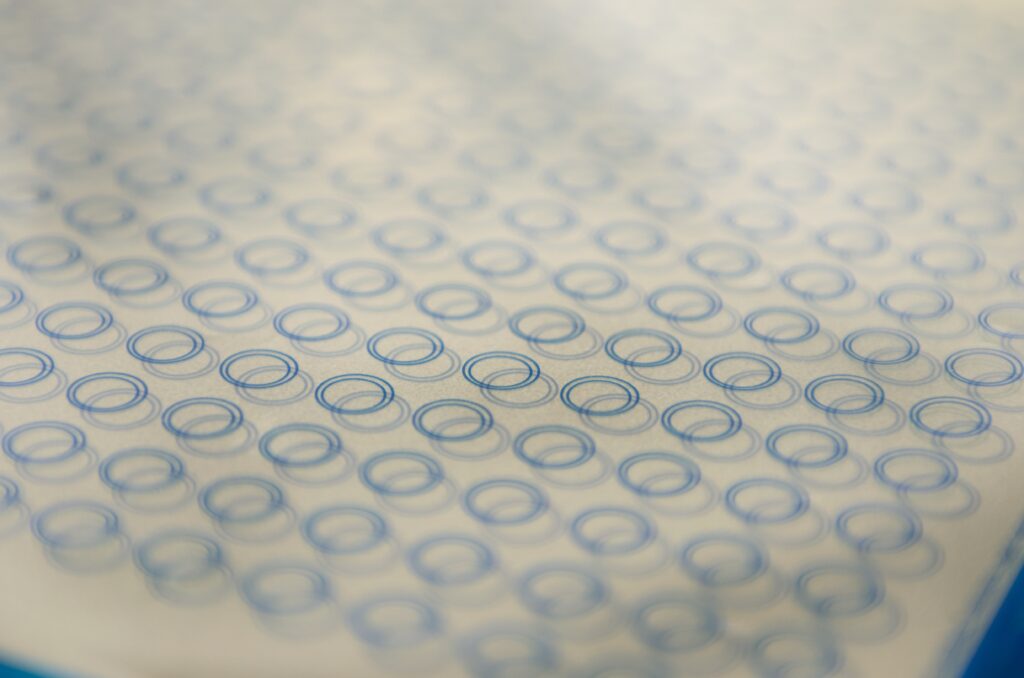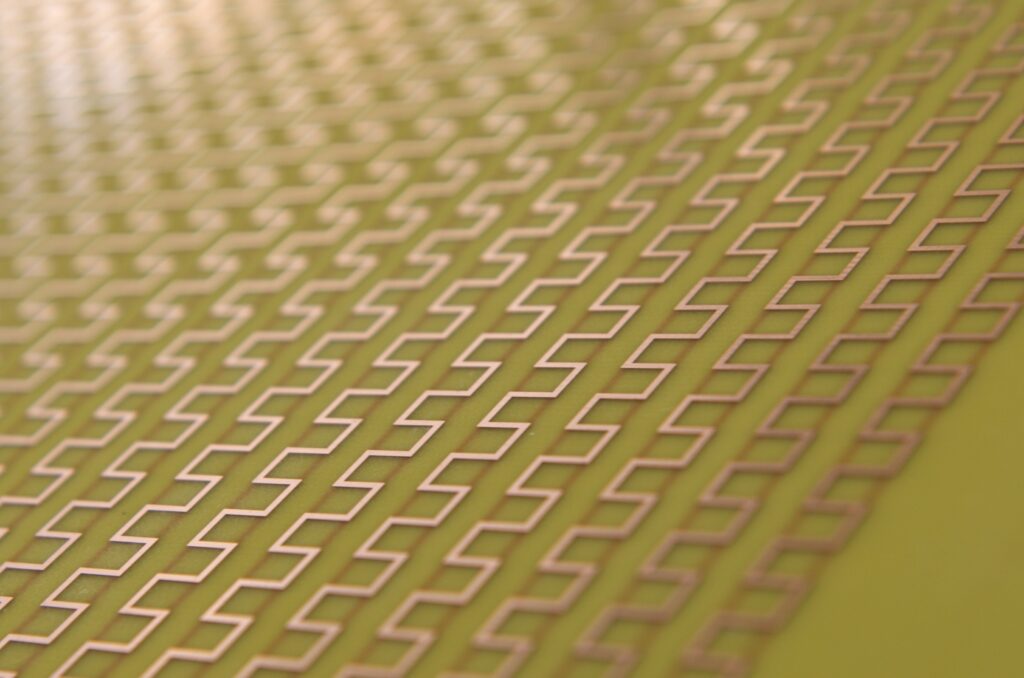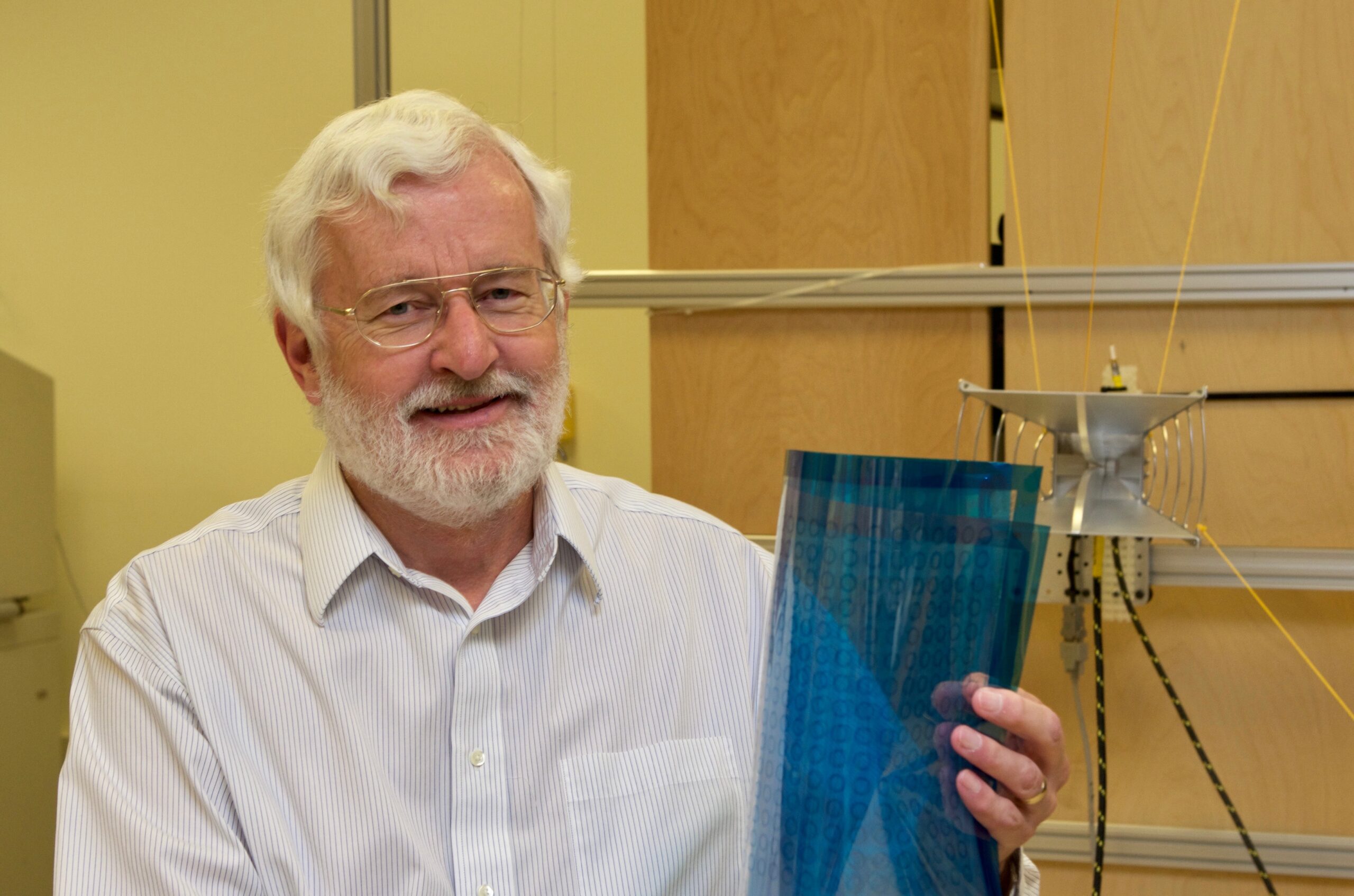Dust motes drift in a shaft of sunshine, tumbling through the air in a seemingly aimless way. Yet, these apparently insignificant specks hold fundamental meaning for UNC Charlotte optical scientist Michael Fiddy.
Fiddy conducts complex research in super-resolution imaging – or optical imaging beyond the diffraction limit of light, and in metamaterial design – or the precise design of composite materials with properties not found in nature.
Even a small speck of dust might be composed of different materials and have a shape that makes it an interesting resonant scattering object over some part of the electromagnetic spectrum. Resonant electromagnetic responses are the key to engineering new materials with unusual optical properties. As Fiddy works to advance these revolutionary fields, he finds himself reconnecting with the basics.
“I can’t look at a speck of dust without thinking about it being an electrical circuit,” says Fiddy, a professor of physics and optical science and of electrical and mechanical engineering.
“It’s a resonant circuit at some frequency, as even a speck of dust will have some distinct electromagnetic scattering properties,” he says. “Now, how do I shape and organize properties like these to make better or fundamentally new materials that I need for next generation applications? More importantly, how to I design and fabricate these small structures to have exactly the properties I want?”
The engineered metamaterials with which Fiddy works show extraordinary optical or acoustical properties, including negative index of refraction, ability to harvesting or trap light, reciprocal properties and anomalous transmission.
The possible applications make up a list that seems unending – including flat lenses, efficient energy devices, high-performance sensors, medical imaging devices, new components for communications technology, and camouflaging structures.
“There’s a pretty large cohort of scientists globally now in this space recognizing that by digging a bit deeper into the fundamentals, we can understand light-matter interactions more profoundly and in a more useful way that will enable us to design new generations of man-made materials for future technology development that will have a major impact,” Fiddy says.
Fiddy’s research at UNC Charlotte initially centered on the imaging side, aligned with his service as the founding director of UNC Charlotte’s Center for Optoelectronics and Optical Communications from 2002 to 2010.
He and colleagues developed algorithms they found had implications for metamaterial research. “One of the projects we focused a lot of attention on was developing new materials to help you image things with higher resolution, such as a superlens that allows imaging with greater precision,” he says. “That’s what led to me getting involved in these artificial or engineered materials.”


The ongoing theme of most of the work now centers on understanding how to better code information onto light waves and then decode it using these engineered materials, to see objects or transform how they appear, he says.
“We’ve worked on modeling how microwaves or light interact with structures to try to determine what those structures are,” he says. “Some of the work has led to us realizing that if we can make measurements from some object that let us figure out what that object was, then we can design objects that lead to certain scattering measurements, that lead to certain observations that we want.”
As they engineer the materials, the researchers determine how the material behaves when they illuminate it. They use that data to refine the engineering design process to further modify the material’s properties.
“We’re continually going through this loop of modeling how light interacts with and propagates through engineered structures and then figuring out from how it responds and how to engineer or make something better that does what I want it to more effectively,” Fiddy says.
With the metamaterial design process, scientists can create artificial materials that at optical frequencies rather than lower frequency microwaves necessarily includes engineering structures with features on the nanoscale.
“As you make these structures smaller and smaller, that automatically gets you into nanotechnology. It’s an exciting area where electrical, optical, and mechanical properties become hard to distinguish, and where there’s a whole lot that’s unknown, because these seemingly unrelated phenomena are all connected.”
—- Michael Fiddy
Fiddy received $542,662 in funding from the DOD DA Army Research Office for a Nanoscribe 3D printer for the fabrication of nano structures, especially those designed as metamaterials for use in the Infrared range. This fabrication tool will assist with developing inverse methods for improved metamaterial designs and will also be used to experiment with low refractive index polymers as the printing medium.
In his four decades of research, Fiddy has published two books, 14 book chapters, over 150 articles and 360 conference papers. He has been editor-in-chief of the journal Waves in Random and Complex Media since Jan 1996 (Taylor and Francis Publisher). He is a Fellow of the OSA, IOP and SPIE and Deputy Editor of OSA’s Photonics Research Journal, and is on the OSA’s Board of Directors. He also has been awarded millions in research dollars.
As his research interests broadened, Fiddy stepped down as director of the Center for Optoelectronics and Optical Communications and in 2011 became the founding site director for the National Science Foundation-funded Industry/University Center for Metamaterials. This center also includes Clarkson University and industry and government partners who work together on projects of common interest.
The center, and Fiddy’s lab, involve a range of students in the work. He also brings insights from his research into the classroom.
“Professor Fiddy’s work is a synthesis of advanced theoretical concepts and practical fabrication of three-dimensional structures and represents the cutting edge of the field of metamaterials,” says Glenn Boreman, chair of the Department of Physics and Optical Science. “A very significant aspect of his research is that it energizes his classroom teaching, continually bringing in fresh examples to motivate and illustrate the concepts presented.”
While Fiddy sees that some people feel unsettled by the creation of materials that do not occur in the natural world, he feels no such discomfort.
“We are at a point where we certainly are going to continue to develop increasingly impressive technology,” he says. “We’re going to be able to do more and more. For example, if I want a kind of Star Trek handheld viewer that I can wave over me, and that allows me to see inside my body, I can imagine a way to do that with these wave imaging algorithms and these new materials.”
One lesson Fiddy seeks to impart to students and colleagues is to be unafraid of the future – and also to be confident in re-examining the past and framing the previous research within a constantly emerging new understanding.
“We are rethinking the most basic concepts and the most fundamental concepts we learned as students. By revisiting them and understanding them in a more profound way, we gain new insights.” he says. “When you get down into this region of light-matter interactions with features that are at the nanoscale, there is a lot we don’t yet understand. It’s very exciting.”
NOTE: This story first appeared in the print edition of the College’s magazine Exchange in 2015.
Words and Images: Lynn Roberson | Top Image: Michael Fiddy creates metamaterials, which do not occur in the natural world.








